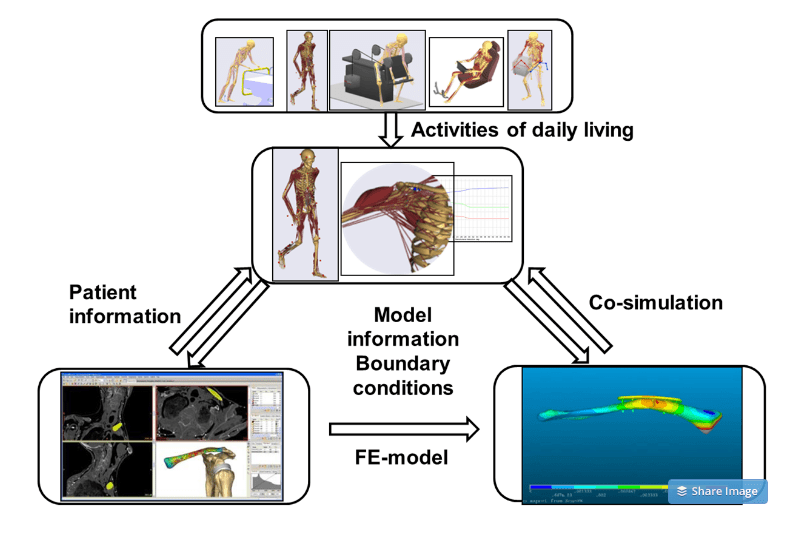The Virtual Physiological Human (VPH) is a fantastic, noble concept first discussed in Europe in the late nineties. The initiative sought to develop a detailed computer model of a human to “enable collaborative investigations of the human body as a single complex system.” The model is applicable in all industries that involve products that interact with the human body. It reduces the cost of R&D. However, more efforts are still needed to fully develop the VPH. Thierry Marchal, Global Industry Director at ANSYS, discusses the matter.
The VPH is a key factor in advancing healthcare…
Marchal: “The VPH will be essential for the industry to cost effectively and systematically test new prototypes in their early design stage. For example, before authorization or when (pre)clinical testing is not yet possible, the VPH will act like a ‘Virtual Human Laboratory,’ facilitating, for instance, in silico clinical trials as recommended by the Avicenna Alliance http://avicenna-alliance.com/. The VPH will also be used by clinicians because it will allow them to understand the potential impact of surgery or implanted devices.”
The interest of the VPH goes far beyond the frontiers of the healthcare industry. It provides extremely valuable insights for the automotive industry and facilitates innovation for consumer products companies where the interaction between the body and the product is essential.

Progressively developing customizable computer models for every organ of the human body is crucial to progress toward the Medical Digital Twin
… but also in other industries
Marchal: “The interest of the VPH goes far beyond the frontiers of the healthcare industry. It provides extremely valuable insights for the automotive industry and facilitates innovation for consumer products companies where the interaction between the body and the product is essential. The sport equipment industry, as well as the athletes themselves, are also interested in this concept. In short, any activity where the human body is playing a role benefits from a reliable, validated virtual physiological model. “
Why is the use of the VPH still limited?
Collaborations, which were encouraged and partially funded by the American, European, and Asian authorities, led to valuable computer representations of different fragments of the human body. These models are now used on a regular basis to optimize new medical devices and new treatments.
The last two decades have seen the following critical achievements:
- Major progress in the interpretation of medical imaging has simplified the translation of living patients into patient-specific computer geometries;
- Academic leaders, pioneer companies, and innovative software groups have developed advanced physical models to predict the structural behavior of the body or body fluids with greater accuracy;
- Other medical groups have developed quick, reliable methods to include patients’ activities (exercising, walking, driving, etc.) in existing models;
- Several clinicians have integrated the VPH into their clinical workflow execution, data handling, and treatments; these new numerical protocols are supported by accepted and emerging standards.
Marchal: “Despite these amazing achievements, limitations, such as computational time, the automated treatment of medical imaging, material property measurements, and large clinical acceptation, still prevent the extensive use of this approach. Without a global commitment for the pervasive exploitation of the VPH concept, the investments necessary to finalize useful models will be limited, thus limiting the actual impact of this concept. It is important to facilitate constructive interactions between all the VPH protagonists to transform this concept into a reality used every day by all healthcare actors.”
The VPH 2018 conference will feature experts from different communities who will review the progress made by the engineering simulation applied to VPH in various sectors, such as cardiovascular, orthopedic, respiratory, personalized medicine, and medical applications for the Internet of things. The audience will assess the current adoption of VPH‘s ability to bridge the gap between the industrial and clinical communities. The conference will include numerous world-class lectures, but the networking opportunities will be essential to connect partners to start collaborations.“
This opens the door to the development of our digital twin, a detailed virtual model of ourselves, allowing treatments to be fine-tuned and our bodies’ behaviors to be predicted, enabling the optimization of our health.
Title picture: Complete orthopedic workflow developed by Prof Dendorfer, University of Regenburg


